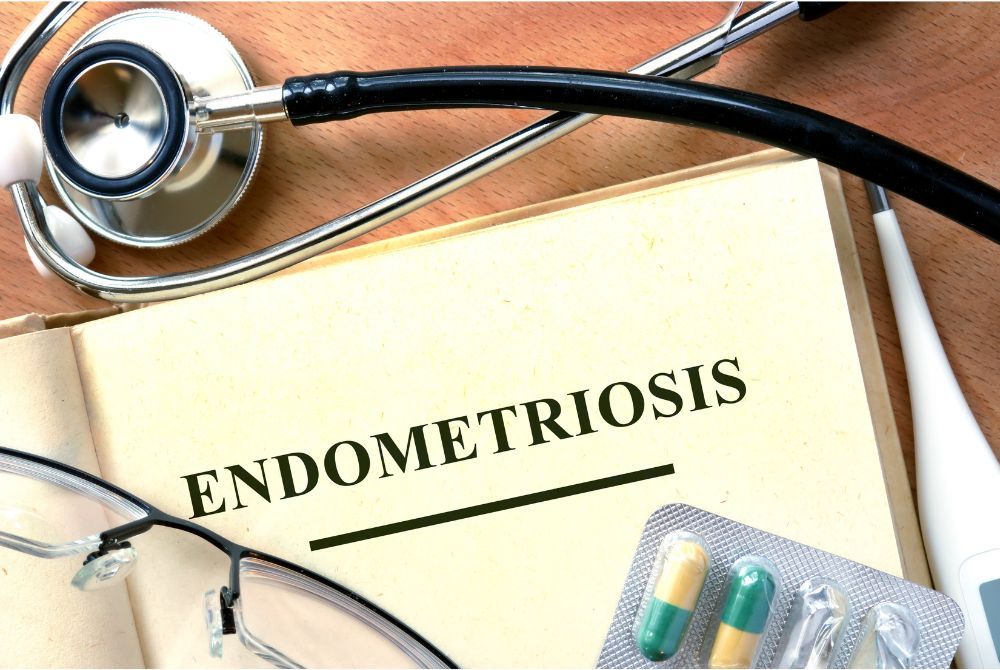
Introduction
This disorder appears in women all over the world. The disease develops when tissue in the uterus starts growing outside the womb and making painful symptoms and infertile conditions. A quick identification of endometriosis helps doctors treat this condition more effectively. This piece shows how doctors check for endometriosis by studying surgical results and describes what tests diagnose endometriosis.
Understanding Endometriosis Symptoms
Starting endometriosis testing depends on being able to identify its symptoms. Endometriosis produces noticeable symptoms such as menstrual period pain in the pelvic area plus extremely heavy menstrual blood flow and pain during sex along with difficult toilet visits.
- Severe pelvic pain, especially during menstruation
- Heavy menstrual bleeding
- Pain during or after intercourse
- Painful bowel movements or urination
- Infertility or difficulty conceiving
- Fatigue, nausea, and bloating
Finding endometriosis symptoms first enables healthcare providers to provide proper diagnosis and treatment.
Common Endometriosis Tests and Procedures
The medical team conducts several endometriosis tests and procedures to make sure they identify endometriosis correctly. Endometriosis detection uses several medical procedures for doctors to make a certain diagnosis. These tests create the first steps to diagnose endometriosis.
1. Endometriosis Ultrasound
Endometriosis ultrasound is a painless tool that helps doctors discover problems in reproductive organs during screening. Your doctor will conduct two types of endometriosis ultrasounds during the diagnostic process
- Transabdominal Ultrasound: The transabdominal ultrasound scan gives an overall picture of the pelvic area when performed on the lower abdomen.
- Transvaginal Ultrasound (TVUS): Transvaginal Ultrasound checks the uterus and ovaries by placing a probe inside the vagina for precise results.
While an endometriosis ultrasound scan finds cysts and lesions it is not enough to confirm endometriosis diagnosis.
2. Endometriosis MRI
The advanced MRI test creates sharp pictures to show the pelvic region during endometriosis evaluations. Endometriosis MRI helps in:
- Identifying deep infiltrating endometriosis
- We examine how serious and widespread the lesion sites are
- Planning surgical intervention if needed
Although doctors usually do not need endometriosis MRI scans all patients must undergo these tests in case regular exams fail to reach clear results.
3. Endometriosis Blood Test
Scientists currently investigate how reliable an endometriosis blood test can be. Research shows that precise CA-125 and other biomarkers do not confirm whether someone has endometriosis. Endometriosis blood test methods include:
- An endometriosis test that measures CA-125 levels shows disease signs but may also show up during other health problems.
- Experts research multiple new indicators in blood to yield better endometriosis tests.
An endometriosis blood test assists doctors in making a diagnosis better when combined with other available methods.
4. Endometriosis Laparoscopy
Healthcare professionals use endometriosis laparoscopy as the main test to detect endometriosis. During this minor surgical operation doctors use a thin lighted tube to see inside the pelvis.
- Doctors perform a small operation on the belly area.
- Doctors insert a thin camera tube inside the pelvic area to study the affected organs.
- The doctor inspects and possibly takes out growths of endometrial tissue during the procedure.
When doctors perform endometriosis laparoscopy it shows endometriosis presence while also working as treatment start point.
5. Endometriosis Biopsy
The doctors perform an endometriosis biopsy during laparoscopy to examine any tissue samples using a microscope. An endometriosis biopsy helps in:
- The doctor examines the samples to prove the existence of endometrial-like tissue away from the uterus.
- The doctor distinguishes endometriosis from other female reproductive issues by testing endometrial tissue samples.
6. Other Endometriosis Screening Methods
The health team may choose these different ways to screen for endometriosis.
- The doctor uses physical tests to check pelvic organs for medical problems.
- The CT Scanner shows large growths of endometriosis if needed.
- Doctors use Hysteroscopy to observe inside the uterus yet use this tool minimally to find endometriosis.
Endometriosis Treatment Options
The right approach to treat endometriosis depends mainly on how advanced the disease is and what steps the patient wants to take about their future pregnancies. Endometriosis treatment includes:
1. Medications
- Pain Relievers: Nonprescription NSAIDs manage pain symptoms in patients.
- Hormonal Therapy: Birth control pills GnRH agonists and progestin medication help slow down endometrial tissue development.
2. Surgical Options
- Laparoscopic Excision Surgery: Removes endometriotic lesions.
- Hysterectomy: When symptoms reach the extreme level surgeons need to remove the uterus.
3. Lifestyle Modifications
- Regular exercise
- Anti-inflammatory diet
- Stress management techniques
Conclusion
Flawless endometriosis detection leads to proper patient care. Precise endometriosis diagnosis comes from group testing that combines endometriosis ultrasound, endometriosis MRI, endometriosis blood tests, endometriosis laparoscopy, and endometriosis biopsy procedures. Various endometriosis tests together let doctors plan personalized treatment options even though no test alone detects endometriosis definitely. Acceptable ways of detecting endometriosis at an early stage help women recover their quality of life and increase their chances of getting pregnant. See a healthcare specialist to get proper endometriosis testing and treatment plan recommendations.
FAQs
1: Can an ultrasound confirm endometriosis?
The presence of cysts in endometriosis ultrasound scans often fails to identify patients who actually have endometriosis.
2: What is the best test for endometriosis?
Laparoscopy with sample biopsy stands as the only test with absolute accuracy to find endometriosis correctly. Endometriosis diagnosis needs doctors to examine tissues during laparoscopic surgery and perform endometriosis biopsy tests.
3: Is there a blood test for endometriosis?
Healthcare specialists use CA-125 testing, among other resources, to analyze endometriosis, although they have no one specific test to confirm the condition.
4: How much time does it take to determine the presence of endometriosis?
People need long diagnosis times since endometriosis symptoms remain difficult to spot. Multiple complex examinations are required to spot endometriosis thanks to its hard-to-identify symptoms.
5: Can MRI detect endometriosis?
Endometriosis MRI will show where the tissue cells have traveled but may also give unclear results.
.png?updatedAt=1705732823811)

.png?updatedAt=1693463514059)
